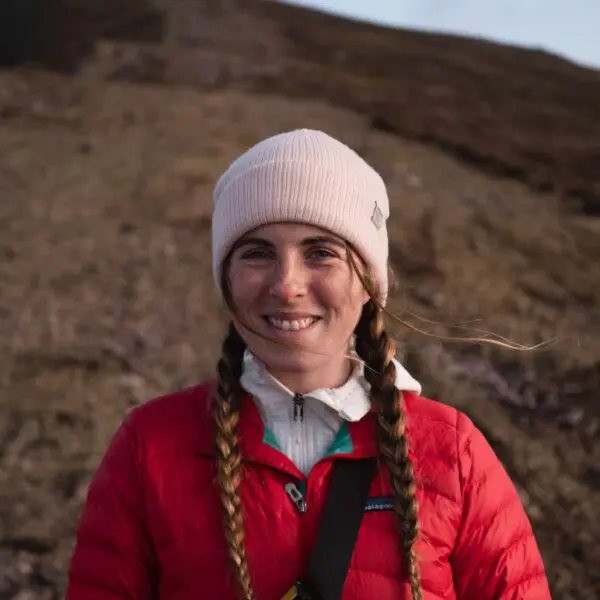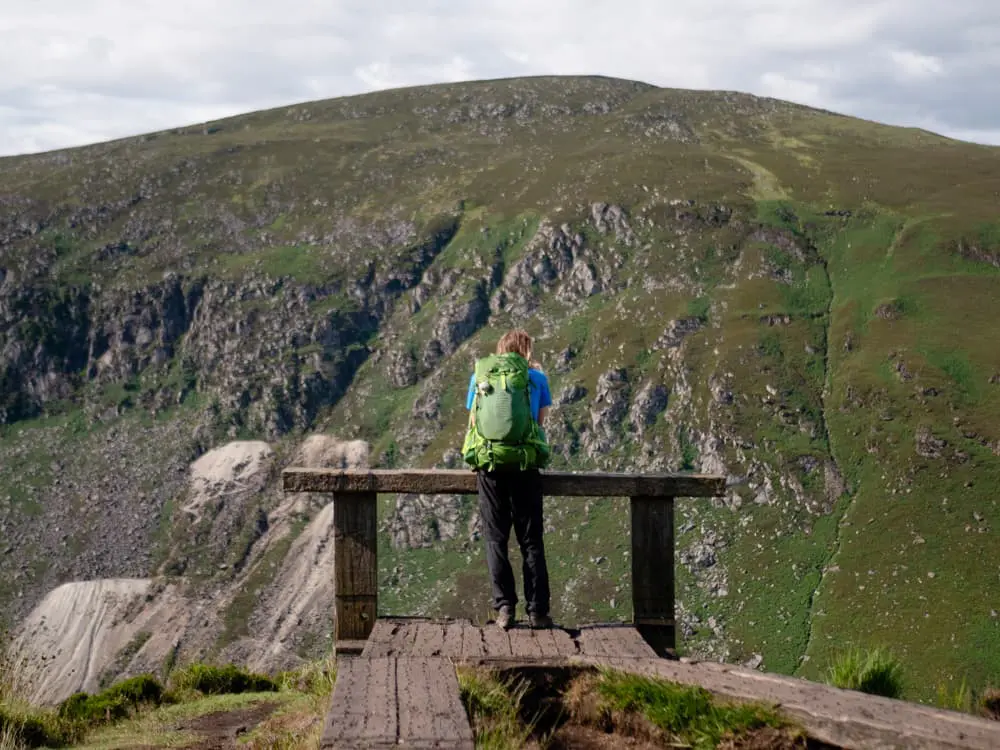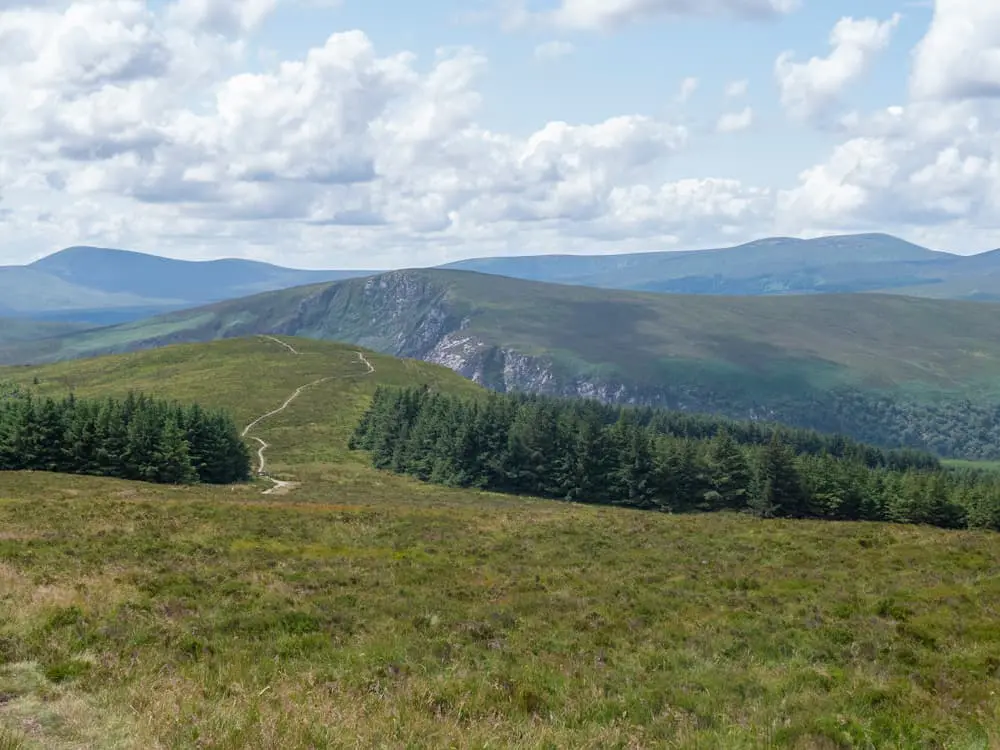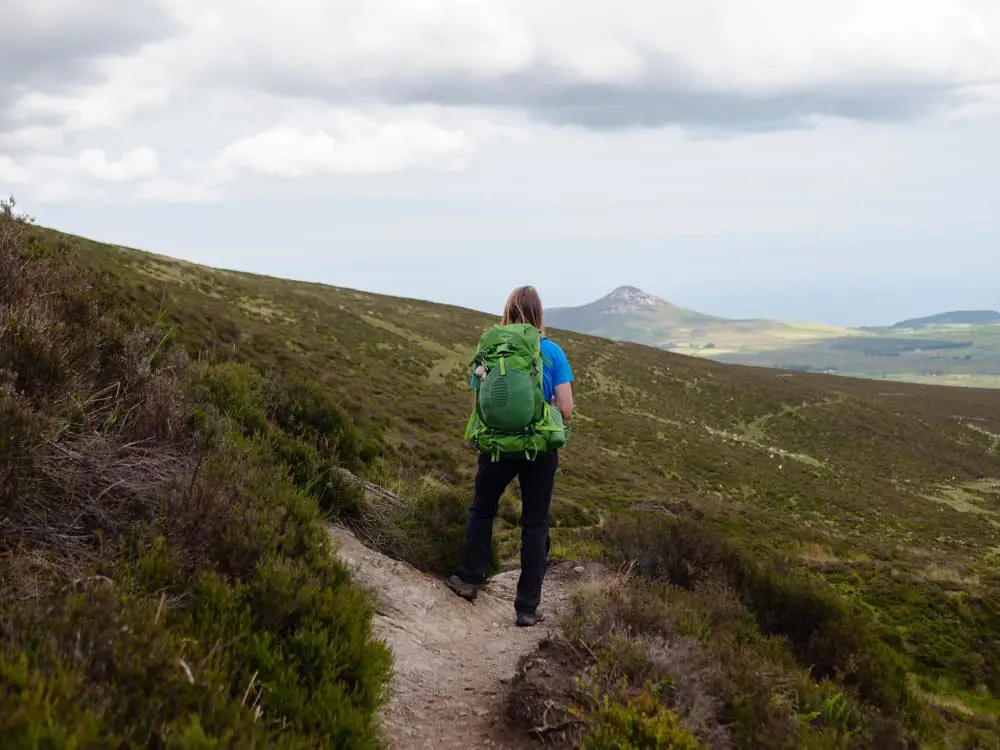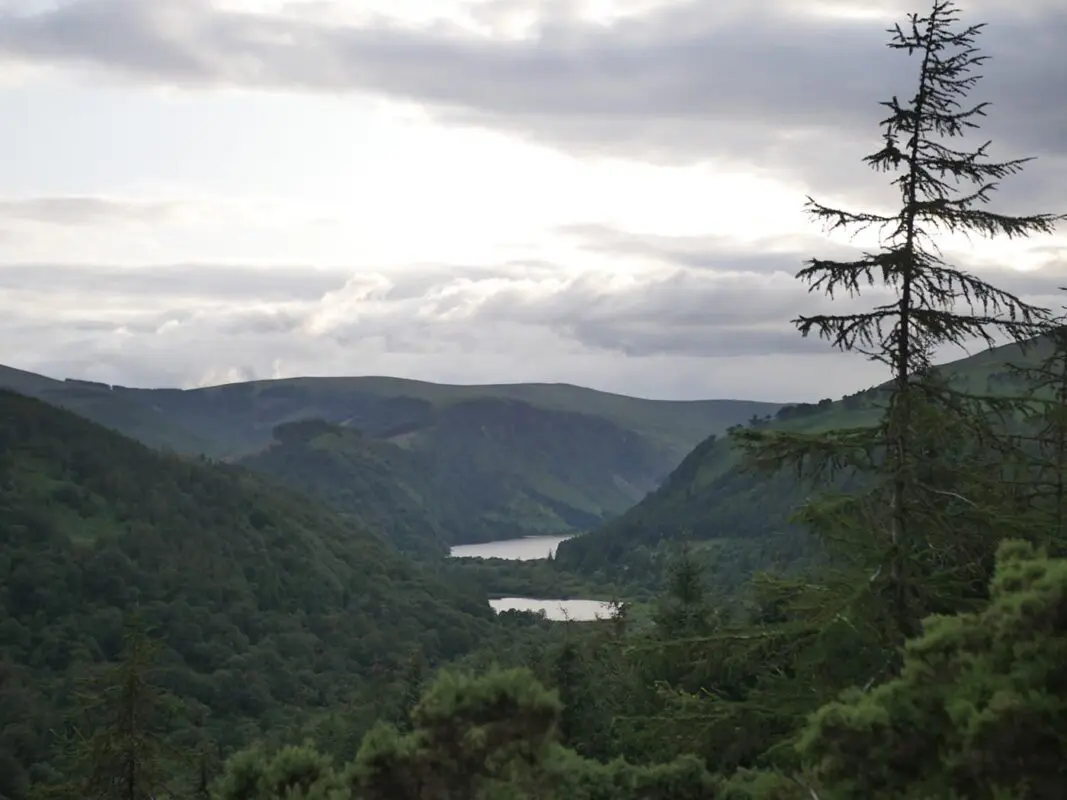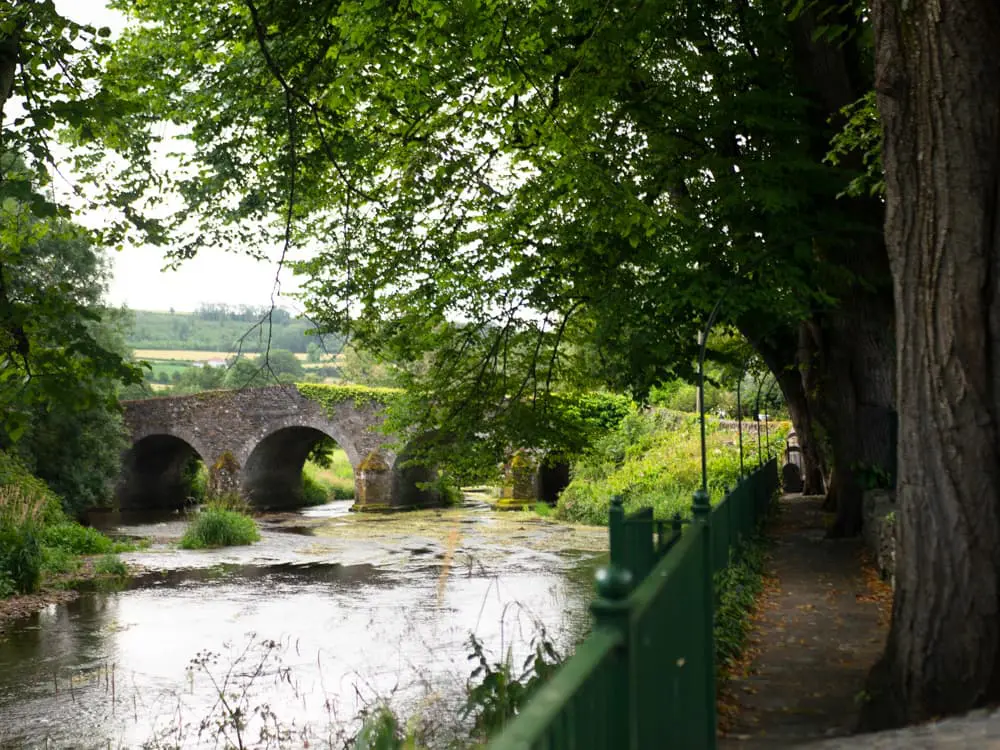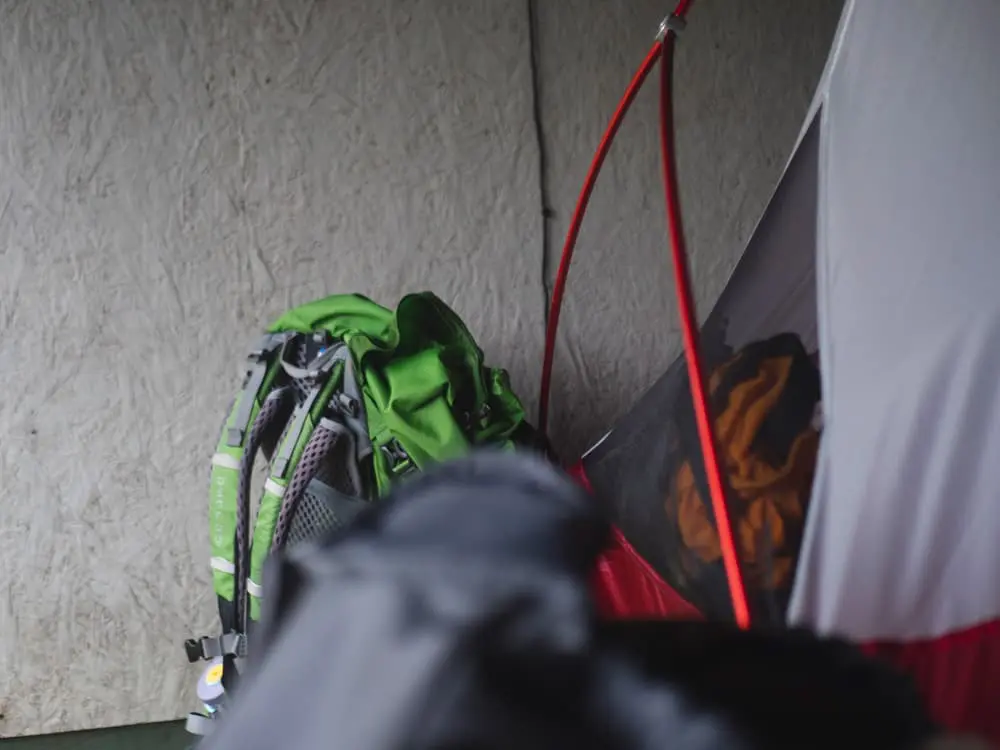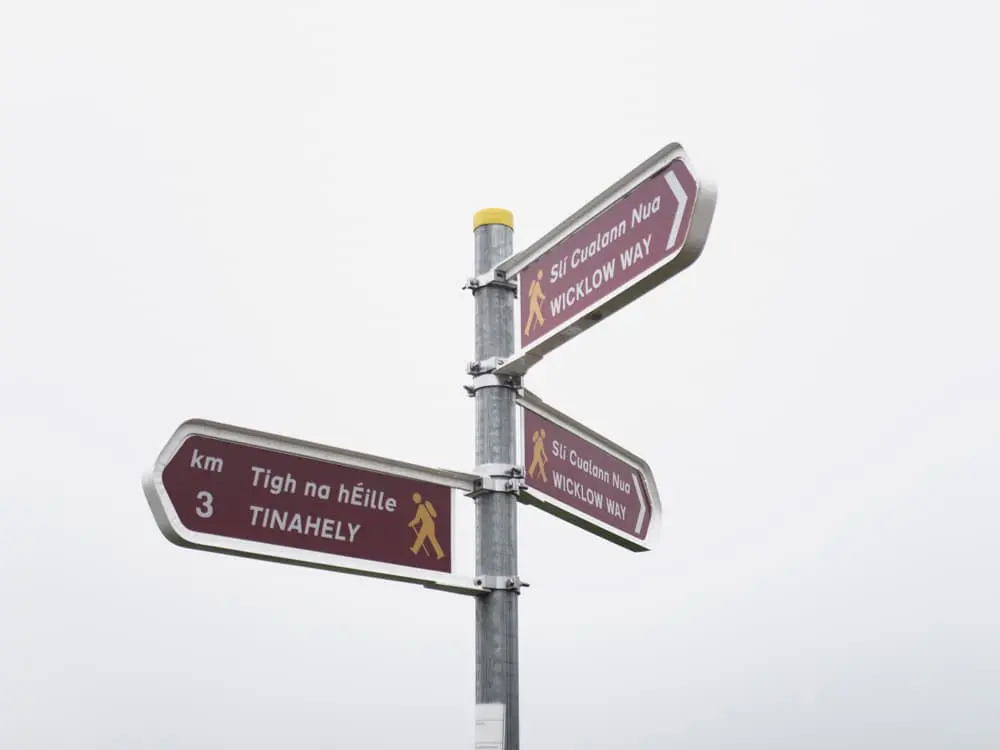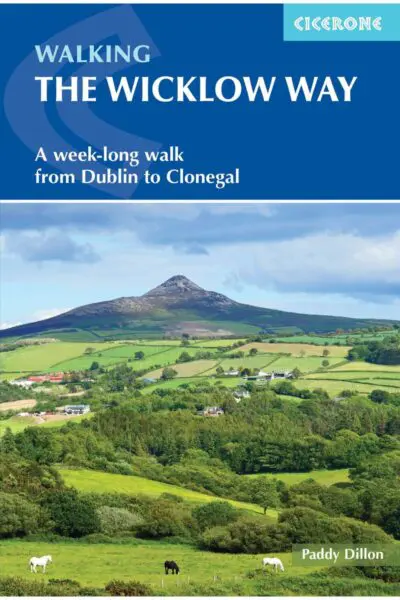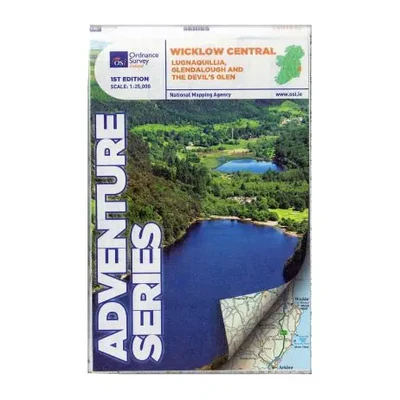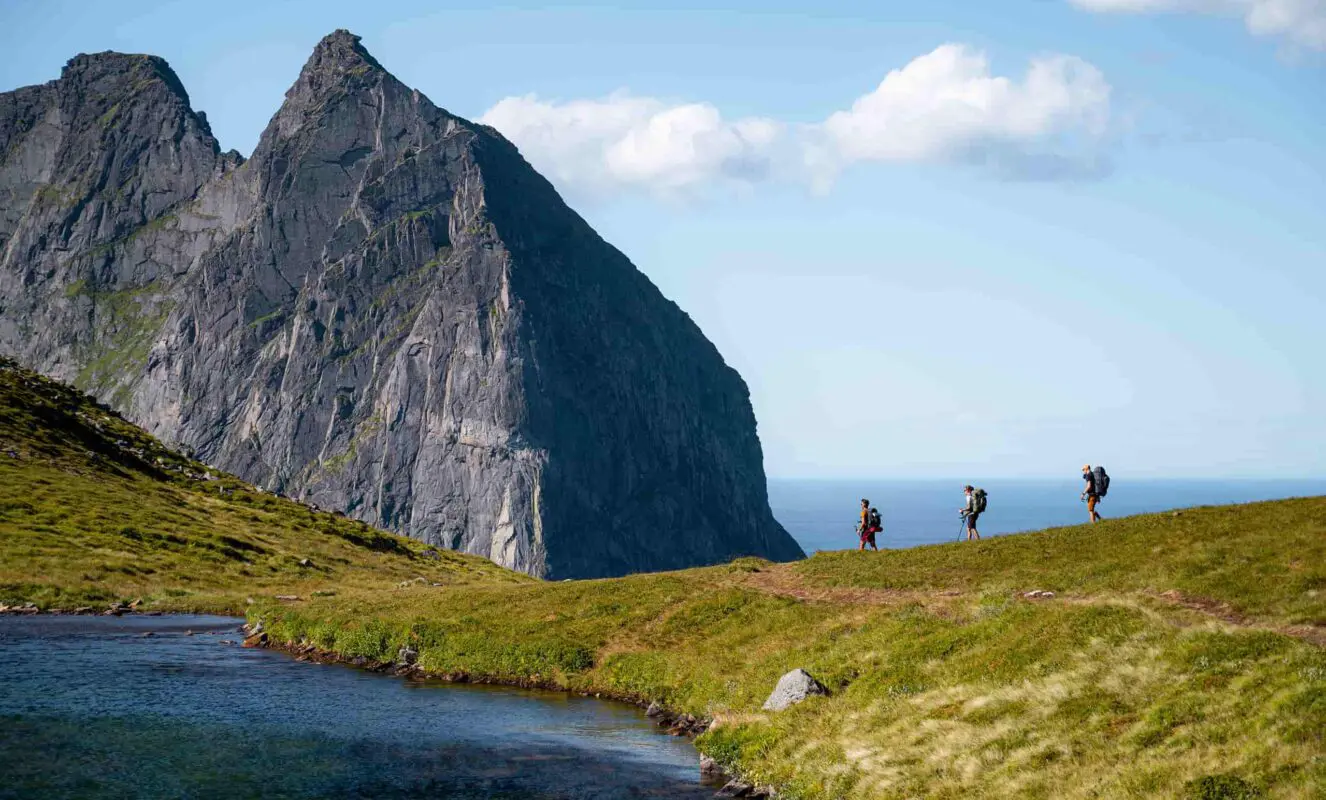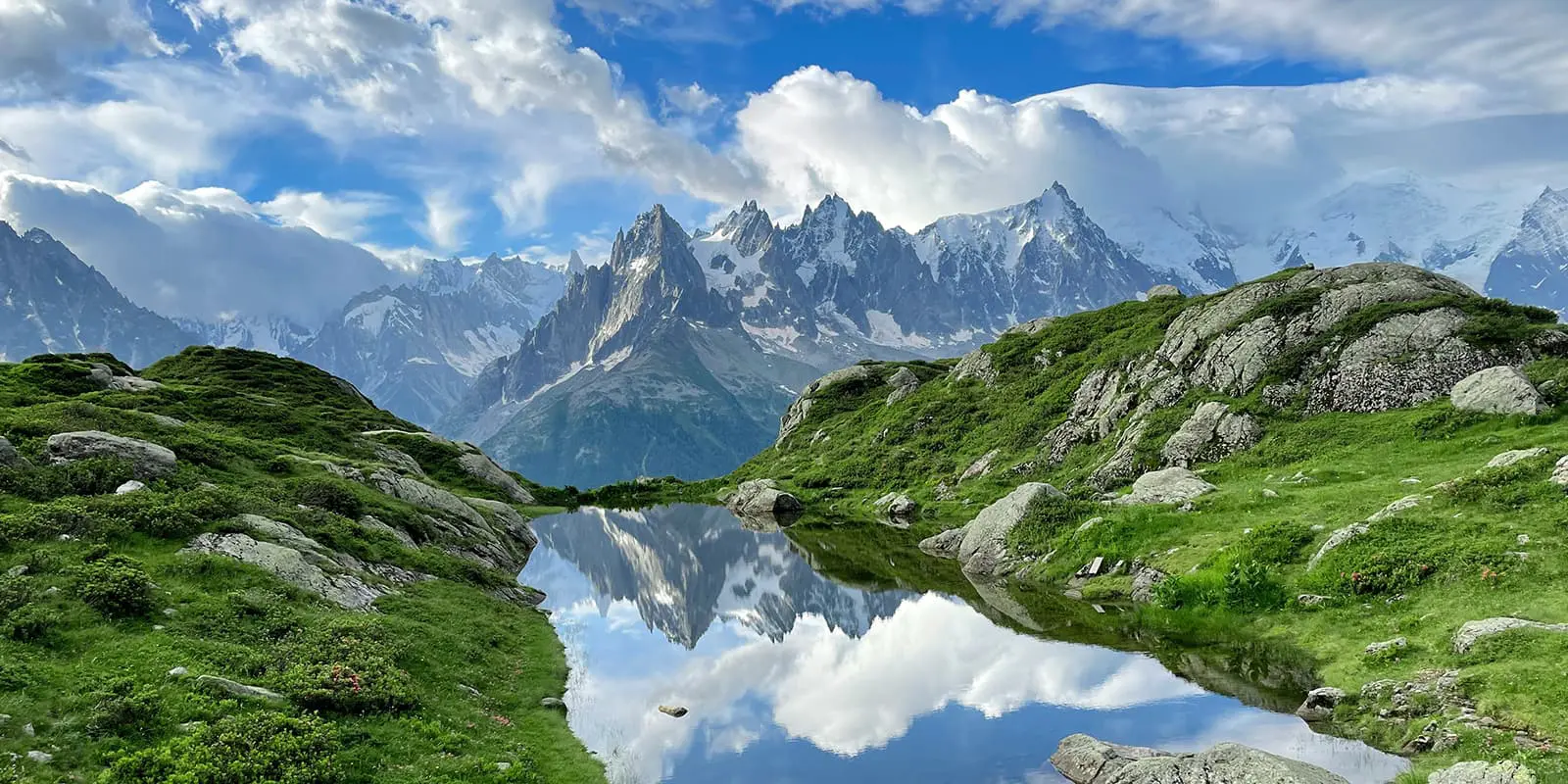The crowning jewel of Wicklow is the Glendalough valley. Coming from the Irish Gleann Dá Loch, it translates to “valley of two lakes.” This is a section where it’s worth wandering from the trail and exploring the ancient monastic city, visitor center, and picnic spots along the water’s edge. To leave the main thoroughfare, the trail slips between two buildings and whisks you off into the forests again. Every now and again the tree cover breaks, and the views back towards the two lakes are beautiful.
Passing through mixed woodlands of Scots pine, oak, ash, and gorse, the route does its best to avoid road walking where possible. The next major mountain sections are White Hill, Lough Tay, and Djouce Mountain. An exposed section, the wind here can be biting and wild, a quintessential mountain trail, with different wild heathers lining the way.
It’s around here where you will begin to get views of Dublin city, even though you’re still over a day from the end of the trail. Famous points along the next section include Powerscourt Waterfall (the highest waterfall in Ireland), Crone Wood, and glencree valley, where the trail twists and meanders along grassy river banks.
The final stage will have you climb up a peak known as Prince William’s Seat, and then into the Dublin Mountains, where strong trails crisscross the hillsides of Two Rock mountain and the Wicklow Way and Dublin Mountains Way briefly intertwine. The views out across Dublin city from here are the best you will find.
As you walk the final 5km, the transition from mountain to city happens surprisingly quickly, and you will suddenly find yourself walking through Marley Park. The final information board, and the true finish point of the trail, is beside Marlay House.




